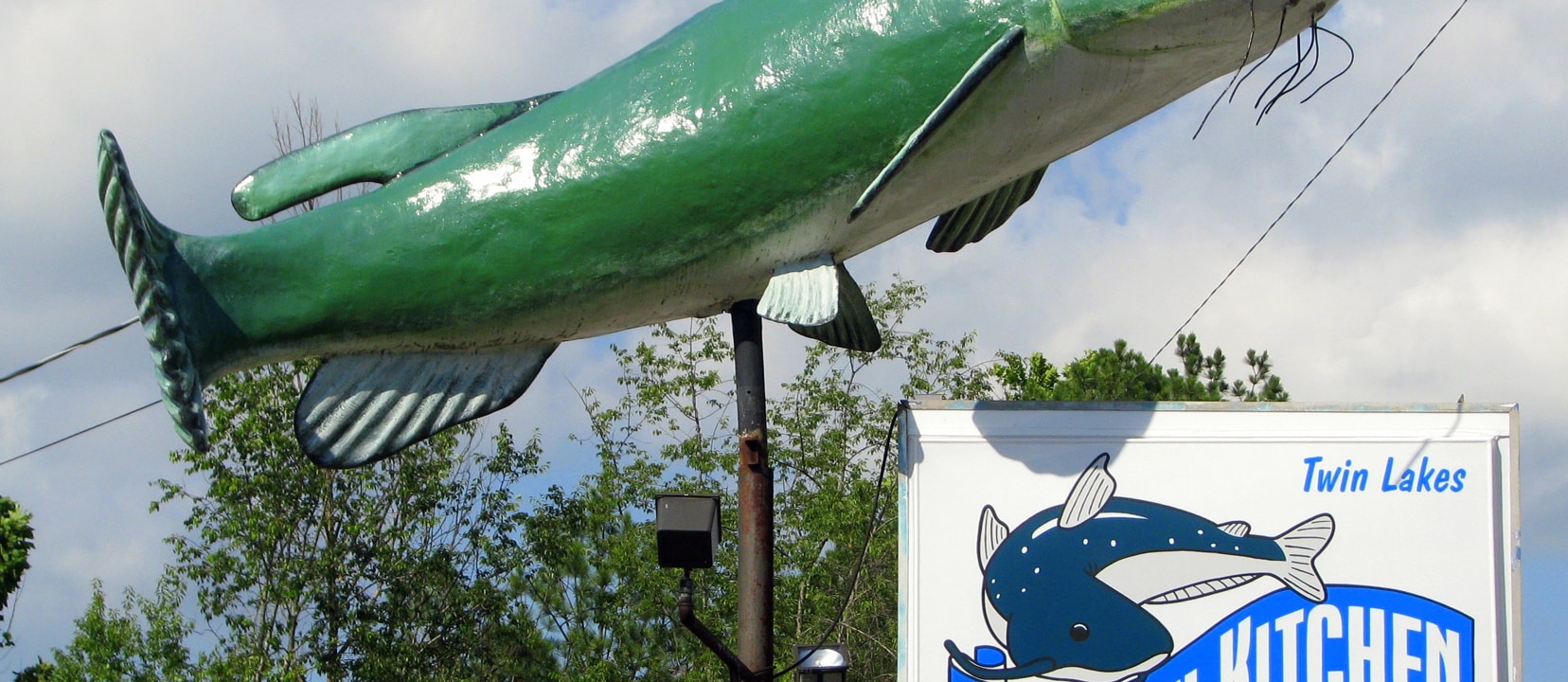Dioxins are highly toxic pollutants that accumulate in tissue fat. Almost all dioxins found in people who don’t work in toxic waste dumps or something similarly hazardous are believed to come from food, especially meat, milk, and fish, which account for about 95% of human exposure. We tend to only hear about it in the news, though, when there’s some mass poisoning.
In 1957, for example, millions of chickens began dying, blamed on toxic components in certain feed fats. Factory farming was taking off, and the industry needed cheap feed to fatten up the birds. They ended up using a toxic fleshing grease from hide stripping operations in the leather industry that were using dioxin-containing preservatives. A subsequent outbreak in 1969 resulted from a pipe mix-up at a refinery that was producing both pesticides and animal feed.
In the 1990’s, a supermarket survey found the highest concentrations of dioxins in farm-raised catfish. The source of dioxins was determined to be the feed, but that’s surprising, since catfish aren’t fed a lot of animal fat. Turns out it was dioxin-contaminated clay added to the feed as an anti-caking agent, which may have originally come from sewage sludge. The same contaminated feed was fed to chickens; so, what may have started out in sewage sludge ended up on the plates of consumers in the form of farm-raised catfish and chicken.
How widespread of a problem did it become? This affected five percent of U.S. poultry production; that’s people eating hundreds of millions of contaminated chickens. And if it’s in the chickens, it’s in the eggs. Elevated dioxin levels were found in chicken eggs too. When the source of the feed contamination was identified, the USDA estimated that less than 1% of animal feed was contaminated, but 1% of egg production means over a million eggs a day. But the catfish were the worst. More than a third of all U.S. farm-raised catfish were found contaminated with dioxins thanks to that ball clay. So, the FDA requested that ball clay not be used in animal feeds. They even asked nicely, writing, “Dear producer or user of clay products in animal feeds, continued exposure to elevated dioxin levels in animal feed increases the risk of adverse health effects in those consuming animal-derived food products… we are recommending that the use of ball clay in animal feeds be discontinued…We look forward to the industry’s cooperation.” (You can see the original letter in my video, Dioxins in U.S. Farm-Raised Catfish).
So, how cooperative did the industry end up being? Half a billion pounds of catfish continued to be churned out of U.S. fish farms every year, but only recently did the government go back and check. Published in 2013, samples of catfish were collected from all over the country. Dioxins were found in 96% of samples tested. Yeah, but just because catfish are bought in the U.S. doesn’t mean they came from the U.S. And indeed, some of the catfish were imported from China or Taiwan, but they were found to be ten times less contaminated. And indeed, when they checked the feed fed to U.S. catfish, more than half were contaminated, and so, it seems likely that mined clay products are still being used in U.S. catfish feeds. Even “just small amounts of mineral clays added to fish feeds, together with the fact that catfish can be bottom-feeders may lead to higher than acceptable dioxin residues in the final catfish products.”
The Institute of Medicine suggests strategies to reduce dioxin intake exposure, such as trimming the fat from meat, poultry, and fish, and avoiding the recycling of animal fat into gravy, but if almost all dioxin intake comes from animal fat, then eating a more plant-based diet could wipe out about 98% of exposure. Thus, “a vegetarian diet or even just eating more plants might have previously unsuspected health advantages along with the more commonly recognized cardiovascular benefits and decreased cancer risk.”
This is a good illustration of how we can’t necessarily rely on regulators to protect our families’ health. More on dietary dioxins and what we can do about them in Counteracting the Effects of Dioxins Through Diet.
Even wild fish are exposed to industrial pollutants spewed into our waterways. See, for example:
Farmed fish is the worst, though: Farmed Fish vs. Wild-Caught.
Other pollutants in our food supply and how to avoid them:
- Food Sources of PCB Chemical Pollutants
- Food Sources of Flame Retardant Chemicals
- Food Sources of Perfluorochemicals
Though the best way to detox is not to tox in the first place, our bodies can eventually get rid of much of the toxin load:
- The Wrong Way to Detox
- How Fast Can Children Detoxify from PCBs?
- How Long to Detox From Fish Before Pregnancy
In health,
Michael Greger, M.D.
PS: If you haven’t yet, you can subscribe to my free videos here and watch my live year-in-review presentations Uprooting the Leading Causes of Death, More Than an Apple a Day, From Table to Able, and Food as Medicine.
